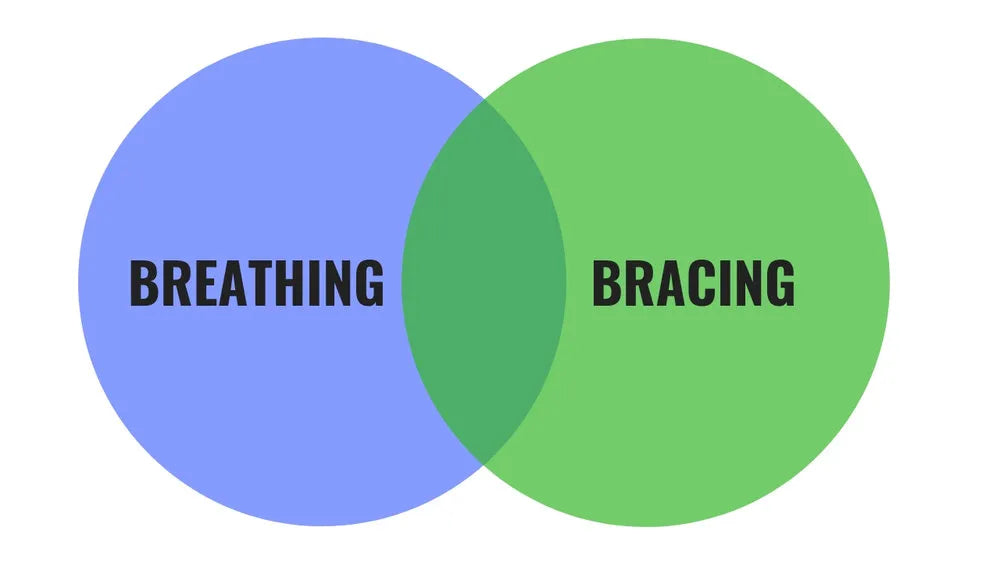
Breathing and Bracing: The Hidden Key to Unlocking Your Strength
In powerlifting, we focus on muscles, technique, and programming. But one of the most fundamental and powerful elements of strength is often overlooked: your breath. Proper breathing and bracing is not just about getting oxygen; it's about creating a rock-solid pillar of stability from which you can exert maximum force. Mastering this skill is the hidden key to a stronger, safer lift. This guide will break down the science and technique of the Valsalva maneuver and 360-degree bracing.
More Than Just Air: Creating Intra-Abdominal Pressure (IAP)
When you lift a heavy weight, especially during a squat or deadlift, your spine is subjected to immense compressive and shear forces. Your body's natural defense against this is to create Intra-Abdominal Pressure (IAP). By taking a deep breath and then contracting your core musculature against that trapped air, you turn your torso into a rigid, pressurized canister.
This IAP acts like an internal air cushion, supporting the lumbar spine from the inside. As research published in scientific journals has shown, higher IAP is correlated with reduced spinal load and increased stability. This is the same principle that makes a powerlifting belt effective—the belt gives your core something to push against, allowing you to generate even greater IAP.
The Technique: The Valsalva Maneuver and 360° Brace
The proper technique for creating maximal IAP is often called the Valsalva Maneuver.
- The Diaphragmatic Breath: Before the lift, take a deep breath down into your belly, not up into your chest. You should feel your stomach expand forward, to the sides, and even into your lower back. This is a 360-degree expansion.
- The "Brace": Once you have that deep breath, trap it. Contract all of your core muscles—your abs, obliques, and lower back—as if you are preparing to be punched in the stomach from all directions. Your entire midsection should be incredibly tight and rigid.
- Hold and Execute: Hold this breath and brace throughout the entire repetition, from the descent to the ascent.
- Exhale and Reset: Exhale forcefully (often with a grunt) only after you have passed the sticking point or completed the lift. Then, reset for the next rep.
For an excellent visual guide on this, coaches like Chris Duffin of Kabuki Strength have created detailed tutorials on this exact bracing sequence.
Common Breathing and Bracing Mistakes
- Chest Breathing: Taking shallow breaths into your chest does not effectively pressurize your core and can actually make your torso less stable.
- Bracing Without a Full Breath: Simply "flexing your abs" is not enough. You need the internal pressure from the trapped air to create true rigidity.
- Letting the Air Out Too Soon: Exhaling during the middle of a heavy squat or deadlift will cause an immediate loss of IAP and stability, which is incredibly dangerous.
- Relying Solely on a Belt: A belt is a tool to enhance your brace, not create it. You must learn to brace effectively without a belt first.
How to Practice Your Brace
- Dead Bugs and Bird Dogs: These foundational core exercises are excellent for practicing maintaining a braced, neutral spine while your limbs are moving.
- Belted Breathing: Put on your lifting belt and practice breathing into it, trying to expand your stomach and obliques to push against the belt in all directions.
Breathing and bracing is not a passive action; it is an active, learned skill. It is the foundation upon which all heavy lifting is built. By mastering the art of the diaphragmatic breath and the 360-degree brace, you will create a level of core stability that protects your spine, improves force transfer, and unlocks your true strength potential. Stop just breathing, and start bracing.
What cue helps you remember to brace correctly? Share your best tips in the comments below!








